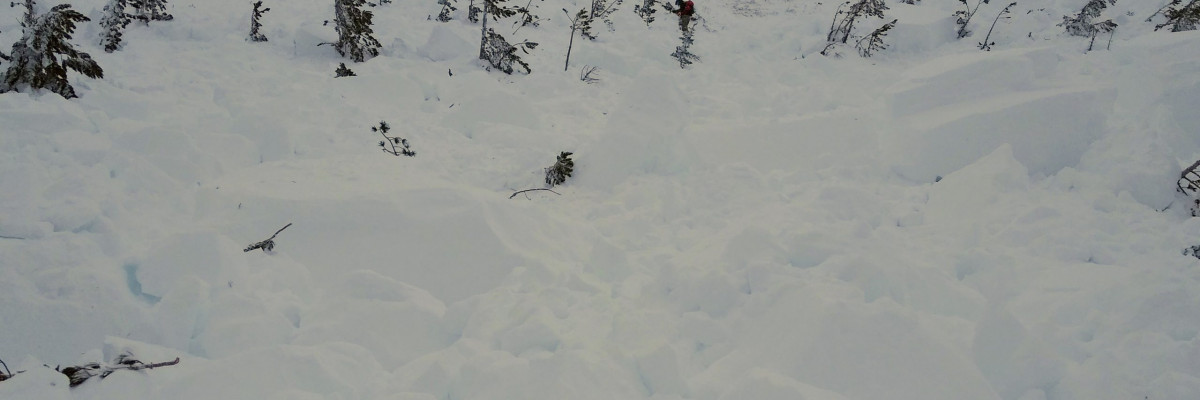The avalanche danger for the west central Montana backcountry is CONSIDERABLE. Dangerous avalanche conditions exist and travel in avalanche terrain is not recommended. Hazard may increase with the forecast snow and wind; check for updates tomorrow.
Good morning, this is Jeff Carty with the West Central Montana Avalanche Center’s avalanche advisory for January 11, 2020. This danger rating does not apply to operating ski areas, expires at midnight tonight, and is the sole responsibility of the U.S. Forest Service.
The snowpack is scary. We’ve had considerable snow since January 1, and it’s sitting on the base of facets, depth hoar, and melt-freeze crusts that developed prior to the new year. The new snow has been consolidating into a dense slab, up to 6 feet thick, on a fragile base. These lower weak layers are likely not going to give warning signs before they fail. They have shown that they can propagate long distances, and it is possible to trigger slabs from above, below, and adjacent to slopes.
The current persistent slab is taking on characteristics of a deep slab, less predictability, harder snow that greatly increases the trauma sustained in a slide, and the likelihood to pull back onto lower angle slopes. It would be wise to stay off slopes steeper than 25º if they connect to any slopes 30º or greater.
In addition, strong ridgetop winds have been loading start zones, and these wind slabs are sitting on the same weak base. With winds up to 75mph in the past week, loading has been considerable and wind slabs are very touchy.
In the past week, we’ve had multiple reports of avalanches propagating long distances and stepping down to deeper weak layers. These include:
- A natural slide in the Southern Missions that propagated across a ridgeline, over 500′ wide, and stepped down 3-4 feet to buried surface hoar
- A skier triggered 2+ feet deep avalanche that ran on a 32º slope in the central Bitterroot
- A ski cut triggered slide at Lost Trail, over 100′ wide that ran at ground on basal facets. This slab was around 4 feet thick
- A skier triggered slide in the southern Missions. 500′ wide with a 7′ crown at the deepest part. It stepped down twice, to a crust/facet layer 18″ from the ground and then to ground. It was triggered from under 30º on the 8-foot thick section, and the upper bed surface was 31º. It was not preceded by whumphing and took place on a slope with trees that did not have flagging
No one was injured in these slides, but the potential was there. As more people travel into avalanche terrain, the likelihood of a slide catching someone goes up. Please travel safely and very conservatively in the coming days.
We received up to 0.4″ of snow water equivalent (SWE), roughly 6″ of snow, overnight accompanied by light winds out of the Southwest with gusts to up to 30mph. Snow will continue today with another 6″-12″ forecast and moderate winds with gusts to 37mph during the day and similar amounts overnight. Another heavier system is forecast for Sunday night with winds to 35mph. This will add considerable load to the weak and already overloaded base.
The bottom line:
There is a likelihood for large and deep avalanches. These may run on slopes that do not appear to be avalanche slopes due to the weakness and low friction of the layers. The hardness of the slab means that these may pull up onto low angle slopes above the start zone. It is possible to trigger these avalanches from above, below, and adjacent to the slope. Test pits may give false stable results.
Due to the depths of these slides, and the hardness of the slab, the likelihood of trauma and deep burial is high. Avalanche airbags will do little to protect you in this case.
Wind slab is very touchy, avoid all wind loaded areas.
Carry all your essential avalanche gear, beacon, probe, and shovel.
Have your inclinometer out and check slope angles often. These are available as an app.
Get the education you need to understand the problem and be safe in the backcountry.
We need your observations to help us understand what’s going on out there. Please submit them on our public observations page.
Ski and ride safe
























